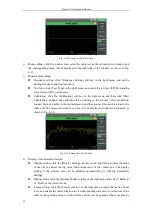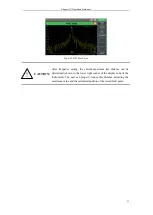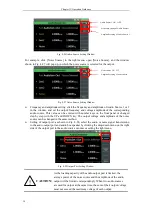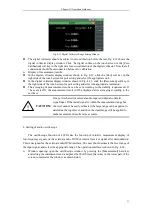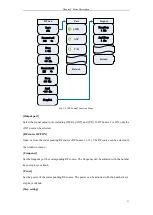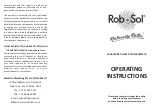
Chapter IV Operation Guidance
52
Fig. 4-34 Oscilloscope Display Window
Menu calling: click the touch screen, select the oscilloscope window and the relevant setting
menu will pop up in the right side.
Setting of input port:
Click the [Port Setting] soft key in the right menu of the touch screen for port setting. Select the
external audio, demodulation, DVM, etc. in the port setting window shown in Fig. 4-35.
Fig. 4-35 Port Setting Window
Refer to Fig. 4-30 and 4-31 for external audio setting, and Fig. 4-9 for demodulation setting.
After the demodulated audio signal is measured, select the appropriate measurement port, IF
bandwidth, demodulation type, audio filter, etc. according to the level characteristics of the
demodulated signal. Then connect the signal to the corresponding to the RF input port , and
observe the measurement result.
Set the DVM port by clicking the [DVM Setting] soft key in the right side of the touch screen
for port setting, as shown in Fig. 4-36.
Fig. 4-36 DVM Setting Window
Click the [Zero Calibration] soft key in the right menu of the touch screen for zero calibration of
the oscilloscope. Note that all connections should be disconnected before zero calibration.
Click the [Coupling Mode] soft key in the right menu of the touch screen, as shown in Fig. 4-37,
and select the DC or AC mode.
Port selection
Port setting
Port setting
Time setting
Amplitude
setting
Setting
of trigger status
Setting of
reference position
Setting of cursor
status
Summary of Contents for 4992A
Page 1: ...I 4992A Radio Test Set User Manual China Electronics Technology Instruments Co Ltd...
Page 2: ......
Page 5: ......
Page 6: ......
Page 7: ......
Page 23: ...Article I Handling Instructions 11 Article I Handling Instructions...
Page 93: ...81 Article II Technical Specifications...
Page 132: ...Article III Maintenance Instructions 120 Article III Maintenance Instructions...



